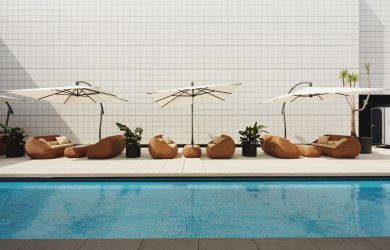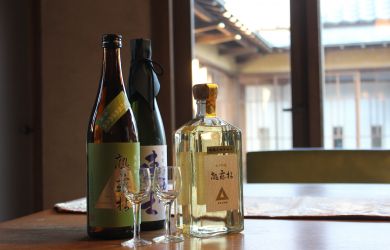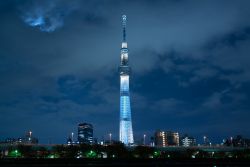
February 1, 2007
The Golden Rock
One of Burma’s many splendid attractions hangs by a hair
By Metropolis
Originally published on metropolis.co.jp on February 2007
If you had to elect one spot as the single most heart-stopping location in a country already well-endowed with spectacles, Burma’s “Golden Rock” would no doubt qualify. Balanced precariously on the edge of a cliff above a vast green valley, Kyaiktiyo Pagoda is said to be held in place with the aid of a single hair of the Buddha.

Photos by Stephen Mansfield
If you are skeptical of the legend, note the Burmese pilgrims stooping down under the rock trying to get a glimpse of the slender thread of hair. According to the legend, it was given to a hermit monk who put it in his topknot for safe keeping. His last request before he died was that the hair be enshrined in a pagoda built on a rock that resembled the shape of his own head. In a land where the strange and inexplicable seem commonplace, there are several more tales and superstitions about the rock. One such belief, of particular appeal to those who decide to undertake the climb up to the top of the mountain, is that those who make it to the summit will one day grow rich.
At the very least, it’s something of a miracle that the rock has not toppled down into the valley during one of Burma’s not infrequent earthquakes. Other sites have been less fortunate. Pagan, another of Burma’s grand sites, sits squarely above a geological fault line, the epicenter of a major earthquake in 1975. In an apocalyptic scene that could have been directed by Cecil B. DeMille or Oliver Stone, temples and pagodas crumbled and cracked, and stupas collapsed or slipped into the Irrawaddy River, perishing in the process. Reliquaries were split open revealing cornucopic troves of gold, precious Buddha images and jewelry: a bizarre glimpse into the splendors of its 12th-century apotheosis.
A few years ago there was no road up to Kyaiktiyo. It took at least four hours for a good walker to reach the top. Now a road winds its way up at least half the route, allowing pilgrims to ascend the final part on foot. For the faint-hearted, elderly or infirm there are even porters at the bottom who will carry you up in a comfortable bamboo palanquin, a form of transport that very likely dates back to British colonial days.
I did the climb in March on an almost perfect day with clear blue skies and, at higher altitudes, a refreshing coolness to the air. Less than an hour later we had arrived at the first guest houses and restaurants that mark the collection of buildings that have sprung up around the approach to the shrine itself.

Here, the Golden Rock soon comes into view, its shape indeed like a head, its gilding unmistakable. A continuous flurry of activity goes on in front of the fenced area of the shrine as supplicants arrive with offerings of auspiciously colored orange and yellow candles, flowers, fruit, and rice, which are placed on stands and then employed as part of a prayer ritual. The pleasant, slightly acrid smell of incense hung in the air and there was a feeling among us that this was, and is, indeed somewhere very special.
A sacred spot to be sure, Kyaiktiyo is also a popular getaway for families and groups of friends, offering a hike through woods and the opportunity to do a bit of souvenir shopping. The top of the hill, with its revolving dioramas for throwing coins in for luck, has something of a fairground atmosphere.

Travelers who visit Kyaiktiyo should not miss the chance to explore the area that lies slightly beyond the main compound. Take the descending steps that eventually lead to a hilltop village visible in the near distance, and then bear left. Here you will find some stunningly located whitewashed pagodas on the cliff edge. A path leads down the side of the hill where there are dozens of other easily reached miniature pagodas, all scenically located on the side of the main hill.
Wind back to the path and visit the village itself, which, if you haven’t had the chance to observe a rural Burmese community before, is a good chance to do so. Look out for the village well—it serves as a meeting place and social forum as people drop buckets into the stone depths and haul up the clear, cool water. A number of dwellings are built on the rocky outcroppings here, and it’s a good place to observe the everyday life of the region, or sit and wait out the sunset.
Sunrise in the company of the rock is also a spectacle well worth seeing if you can get up early enough. Several people will already have arrived, with heavy clothing to guard against the chilly morning air—a last exhilarating breeze before you descend to the steamy plains of Burma.
Thai Air has regular flights to Rangoon. Given the decrepitude of domestic planes, it is perhaps safer (or at least affords peace of mind) to take local buses or hire your own transport to the rock from Pegu, the nearest town of any size. The climb is only really practical in the dry season, from October to April. Guest house accommodation on the hill is fairly basic. Rooms at the modest Kyaiktiyo Hotel can be booked through travel agencies in either Bangkok or Rangoon. Hygiene can be a problem. Make sure to only eat thoroughly cooked food, and to take plenty of mineral water with you. The beer is safe. There are many good books on Burma, but Norman Lewis’s classic Golden Earth and Pascal Khoo Thwe’s From the Land of Green Ghosts are highly recommended.
[geo_mashup_map]



-390x250.jpg)



